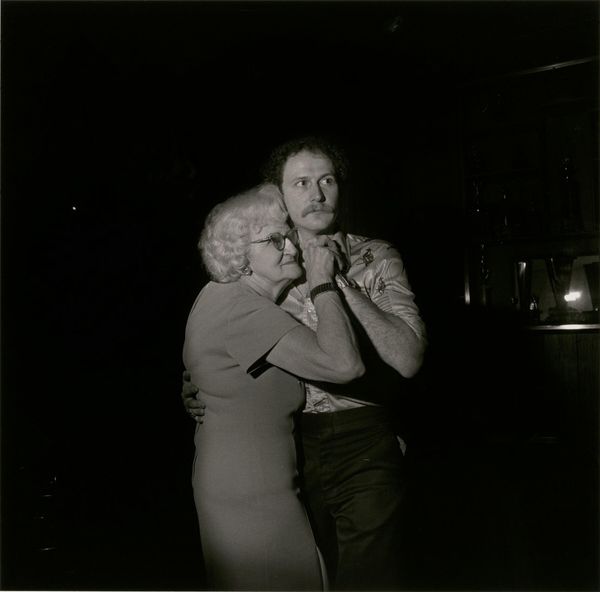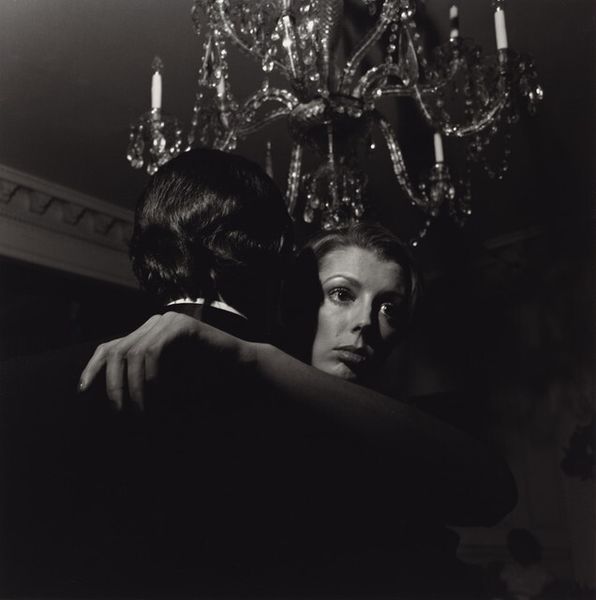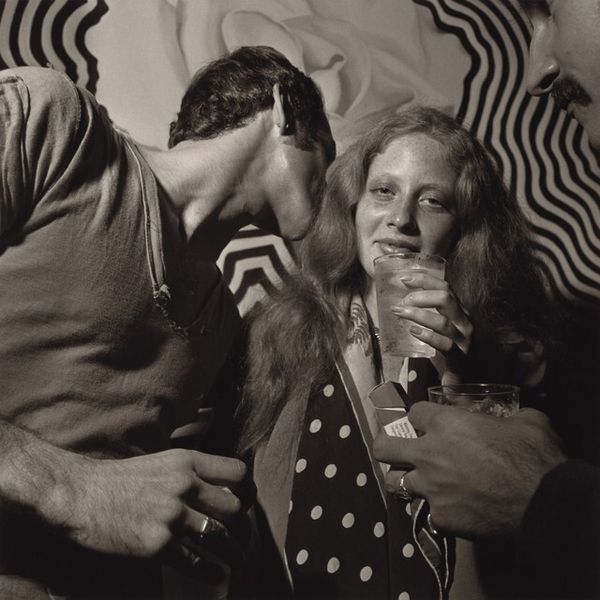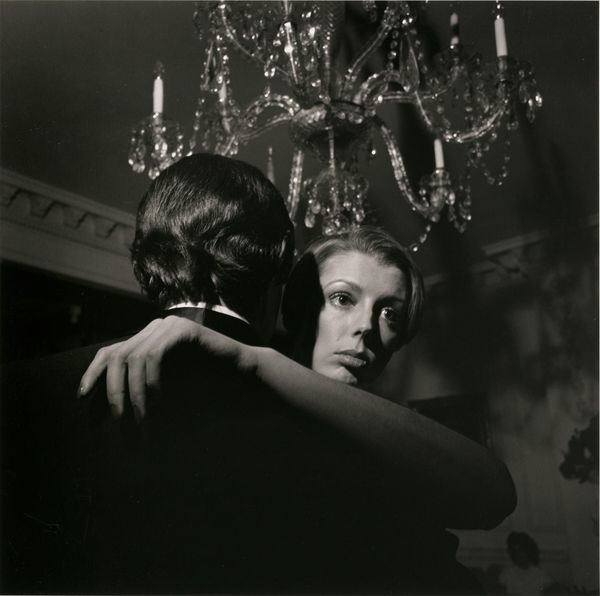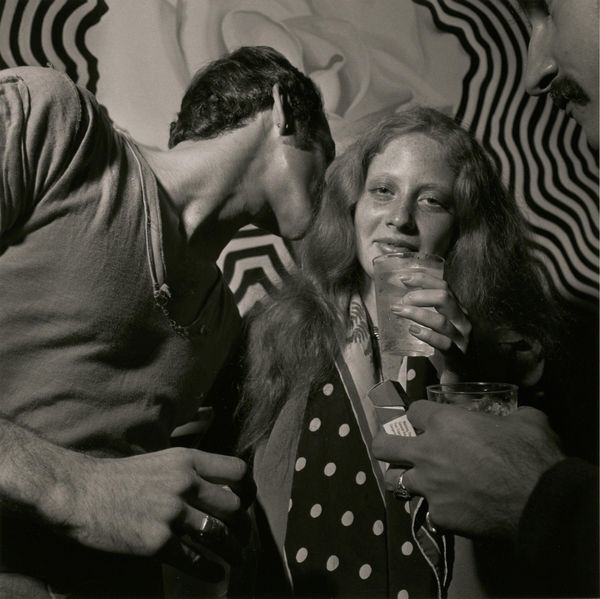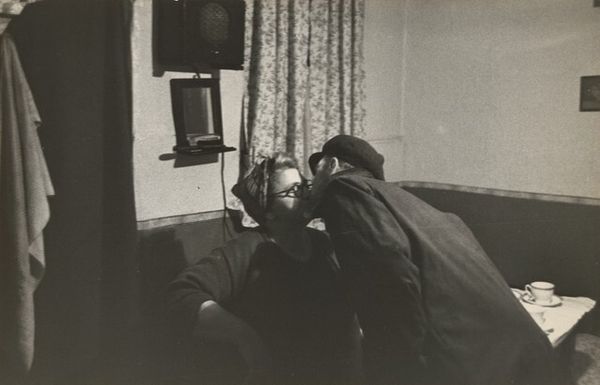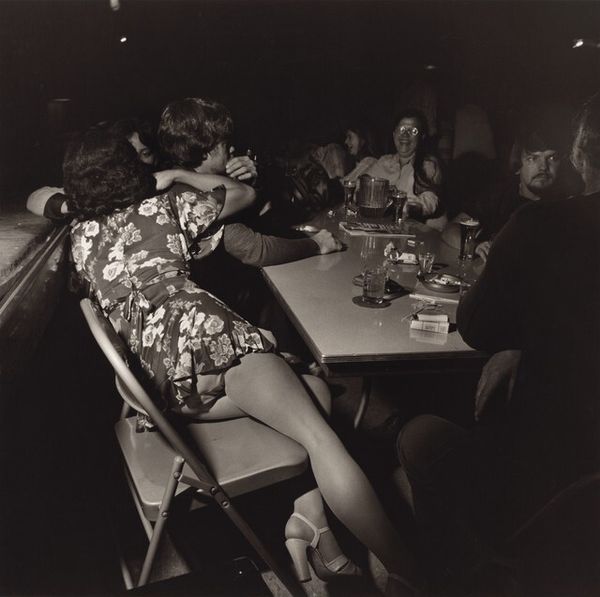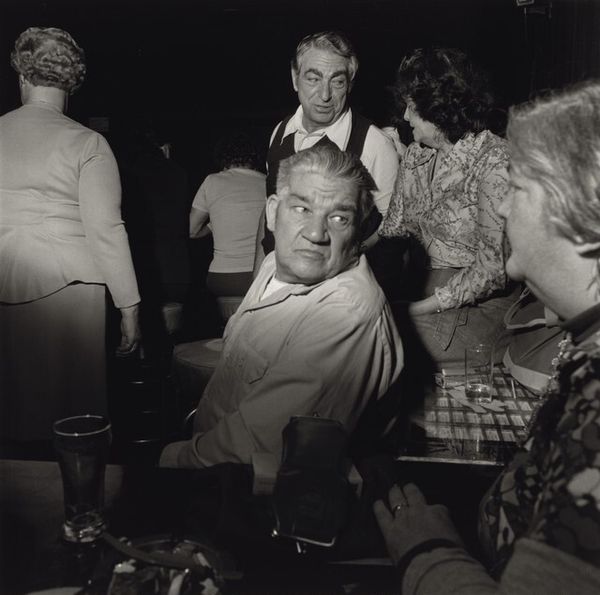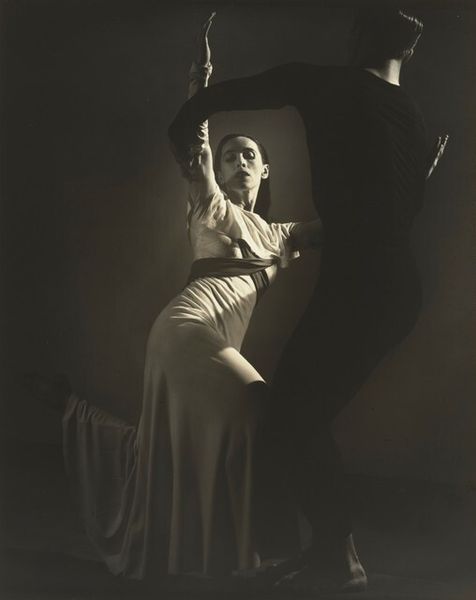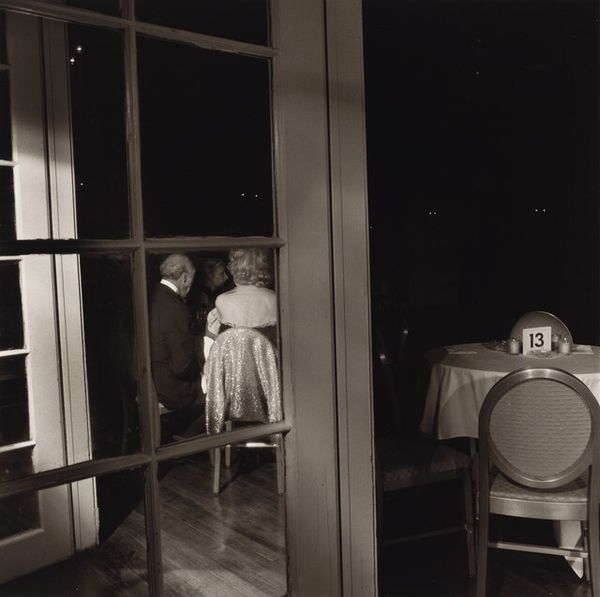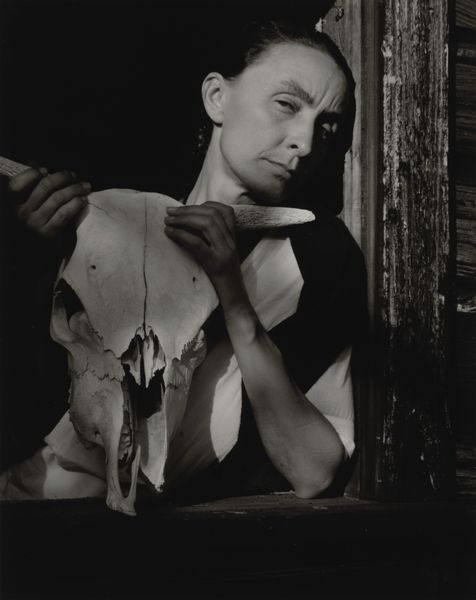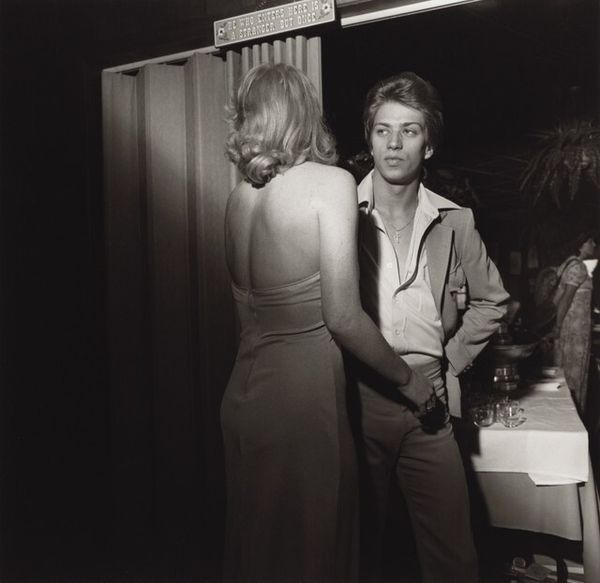
photography
#
portrait
#
wedding photograph
#
black and white photography
#
black and white format
#
archive photography
#
street-photography
#
photography
#
historical photography
#
black and white theme
#
black and white
#
monochrome photography
#
genre-painting
#
celebration photography
#
monochrome
#
realism
Dimensions: image: 35.5 × 36.3 cm (14 × 14 5/16 in.) sheet: 50.3 × 40.5 cm (19 13/16 × 15 15/16 in.)
Copyright: National Gallery of Art: CC0 1.0
Curator: This is Larry Fink's "Dance, American Legion, Bangor, Pennsylvania" from 1979, captured in his signature black and white. There's a lovely intimacy to his documentary photography, wouldn’t you say? Editor: Absolutely. My first impression is how beautifully unglamorous it is. The low lighting, the slightly awkward embrace…it’s honest. There's this tender dance, a slow song. What do you feel the image communicates to you? Curator: It's a feeling of deep connection. Despite the grainy texture and simple composition, there's so much story packed in. I imagine it tells of intergenerational family ties, of finding joy in mundane spaces and embracing your inner self no matter who's watching. You can tell the people in the photograph feel very comfortable in the scene with each other. Editor: Right, and that ‘comfort’ is crucial to how Fink situates everyday people within the power structures that govern their lives. These are working class folks. The woman, in her simple dress and sensible shoes, might represent conventional ideas of ‘womanhood,’ and the man, probably a relative, embodies ideas of strength. How do they move within established gender and class boundaries, what options did they have in rural Pennsylvania? I bet their lives are reflected in that single shot! Curator: I suppose the presence of trophies behind them can speak to that idea that even working class communities engage with capitalist reward systems, too. It might not be immediately clear from the lighting and simplicity, but I suppose everything has its root there. I also wonder, did Larry Fink know them? The feeling conveyed to the audience is almost intrusive because the people depicted seem comfortable. Editor: Fink certainly makes you feel like an uninvited guest, the perspective feels so real that one begins to doubt the people photographed gave their permission! Though the intimacy is compelling, such documentary style sometimes flirts with the voyeuristic. Curator: True, that tension is a real thing. But maybe the magic lies in showing us a slice of life we might otherwise never see, inviting empathy. Editor: Absolutely, which sparks meaningful dialogue. It prompts us to see, critique, and respect lives lived outside the spheres of mainstream culture. Thanks for the talk! Curator: To you as well!
Comments
No comments
Be the first to comment and join the conversation on the ultimate creative platform.
